Description
Rapa Nui es una isla que se sitúa en el archipiélago de la ¨Polinesia en el Océano Pacifico a 3.700 Km de Chile Continental y fue anexada a Chile en el año 1888.
Es muy conocida por sus estatuas monumentales en piedra, llamadas “moáis”, figuras humanas de inmensas cabezas talladas y apoyados sobre grandes pedestales de piedra. Se estiman cerca de 900 moais elaborados por los isleños entre los siglos XIII y XVI.
La artesanía en madera en Rapa Nui, figura entre las expresiones más destacadas del simbolismo polinésico. Este oficio logró un gran desarrollo en el siglo XVIII y principios del siglo XIX.
A pesar de la escasez de la madera, ya que la isla no tiene. ni ha tenido condiciones naturales para su desarrollo, este material, ha mantenido su valor y preferencia por los artesanos de Rapa Nui.
Las imágenes de los tallados en madera han sido figuras que representan los ancestros, como el moai kava kava, tangata manu u hombre pájaro, moko o lagartija, reimiro o pectoral, Tahonga o pendiente de forma ovoidal, kohau rongo rongo, (tablillas escritas o parlantes), Ua o maza larga, paoa o maza corta, ao o remo de mando y rapa o remo. El valor estético de estas imágenes está en el simbolismo que representa y en su carga tradicional.
Las herramientas que se han utilizado para el desbaste y tallado de las figuras, son cuchillos o lascas, en piedra, luego los formones y azuelas de fino acero llamada kauteki. Para el pulido, se usaron diversas herramientas como dientes de tiburón y colmillos de roedores, piedra pómez y arena. Para las terminaciones se usaron huesos y piedras de obsidiana, que se emplean para los ojos, máscaras y bocas.
Durante el siglo XIX el tallado en madera tuvo una creciente valoración en que se comenzó a re-valorar su elaboración por el contacto con extranjeros. Cambió así el significado y la función que tenían estos objetos, pues muchos dejaron de tener un uso ceremonial y se fabricaron para el intercambio o trueque.
Luego, a partir del proceso de apertura vivido desde la década de los 70′, las transformaciones en el rubro artesanal se profundizaron. La intensa actividad turística convirtió a la artesanía en un importante rubro y en motor económico de la isla.
En la actualidad, se pueden encontrar estos tallados en los talleres de los artesanos de la Isla y en tiendas especializadas en Santiago de Chile.
English
Rapa Nui Wood Carvings
Rapa Nui is an island located in the Polynesian archipelago in the Pacific Ocean, 3,700 km from mainland Chile, and was annexed to Chile in 1888. It is well known for its monumental stone statues, called “moais”, human figures with huge carved heads resting on large stone pedestals. There are an estimated 900 moais made by the islanders between the 13th and 16th centuries.
Wood craftsmanship on Rapa Nui is one of the most outstanding expressions of Polynesian symbolism. This craft achieved great development in the 18th and early 19th centuries. In spite of the scarcity of wood, since the island has no natural conditions for its development, this material has maintained its value and preference for Rapa Nui’s artisans. The images of the wood carvings have been figures representing the ancestors, such as the “moai kava kava”, “tangata manu” or bird man, “moko” or lizard, “reimiro” or pectoral, “tahonga” or ovoid shaped pendant, “kohau rongo rongo”, (written or talking tablets), “Ua” or long mace, “paoa” or short mace, “ao” or oar and “rapa” or oar. The aesthetic value of these images lies in the symbolism they represent and in their traditional significance.
The tools used for roughing and carving the figures are stone knives or flakes, then chisels and fine steel adzes called “kauteki”. For polishing, various tools such as shark teeth and rodent tusks, pumice stone and sand were used. Bone and obsidian stones, used for eyes, masks and mouths, were used for finishing. During the 19th century, wood carving became increasingly valued, and its workmanship began to be re-evaluated through contact with foreigners. The meaning and function of these objects changed, as many of them ceased to have ceremonial use and were made for exchange or barter.
Later, with the opening up of the market in the 1970s, the transformations in the handicraft sector deepened. Intense tourist activity turned handicrafts into an important industry and an economic driving force for the island. Today, these carvings can be found in the workshops of the island’s artisans and specialised shops in Santiago de Chile

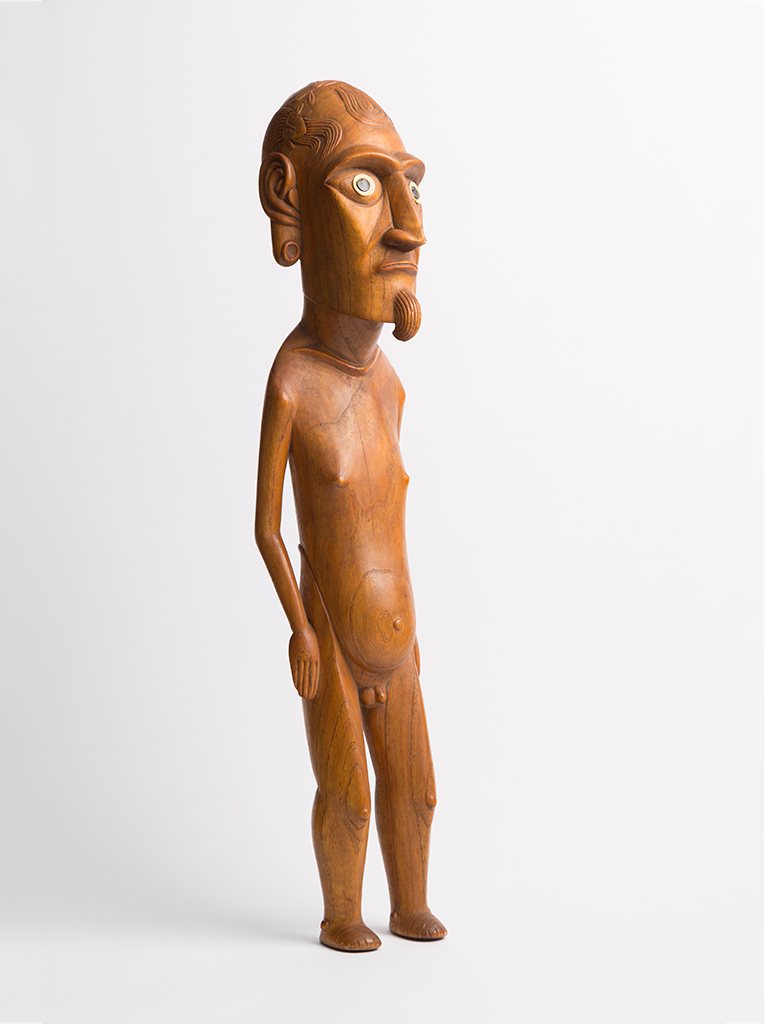
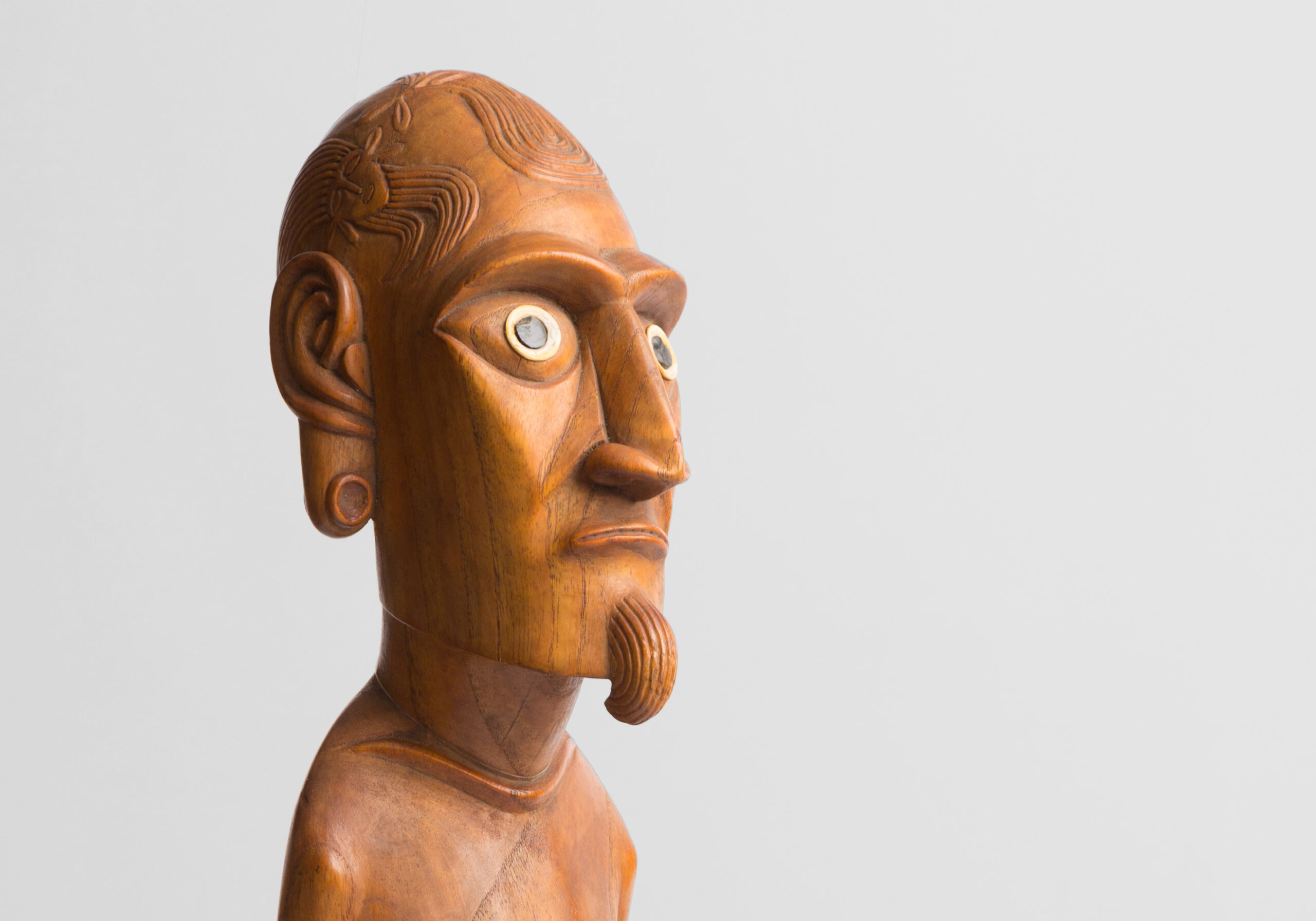
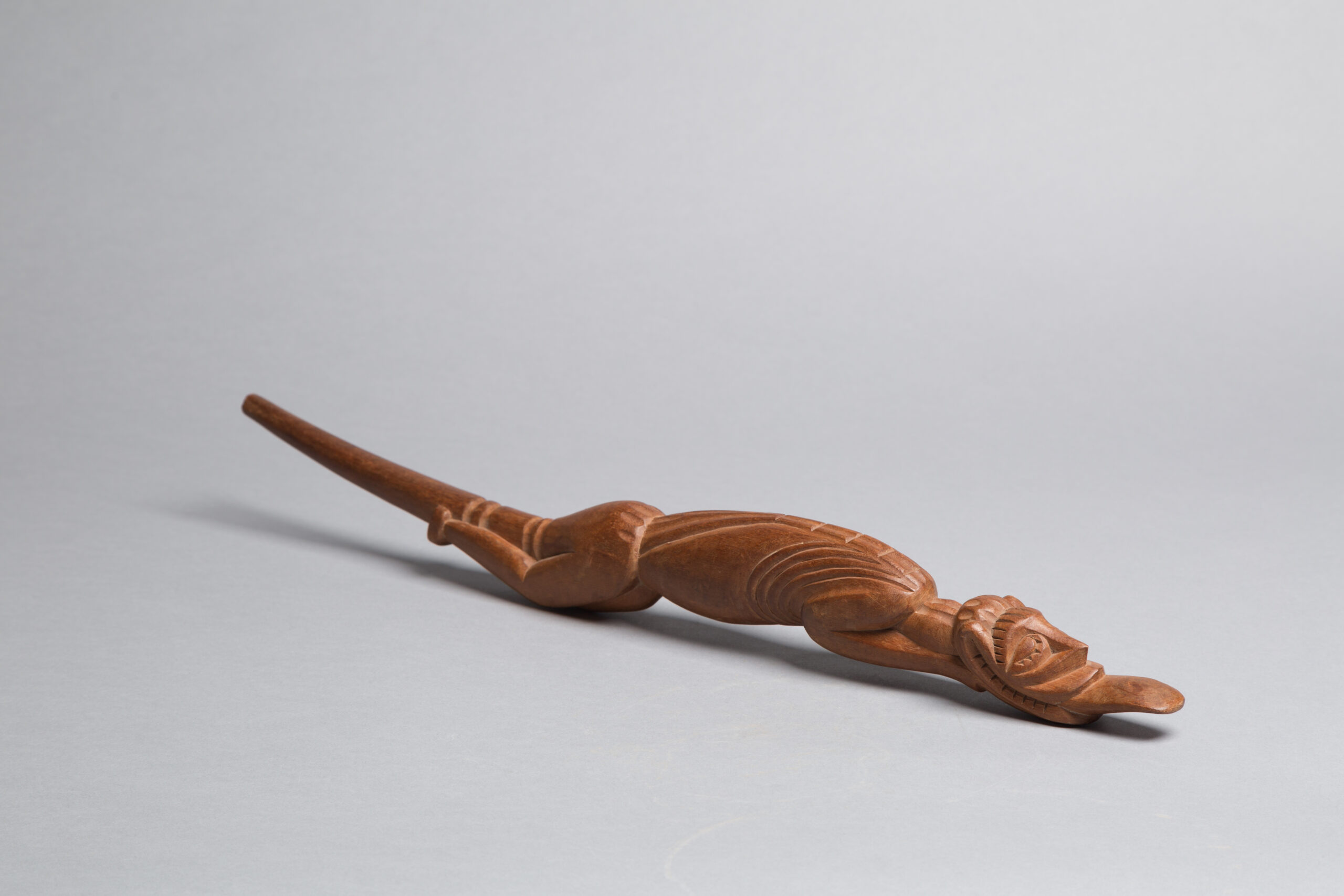
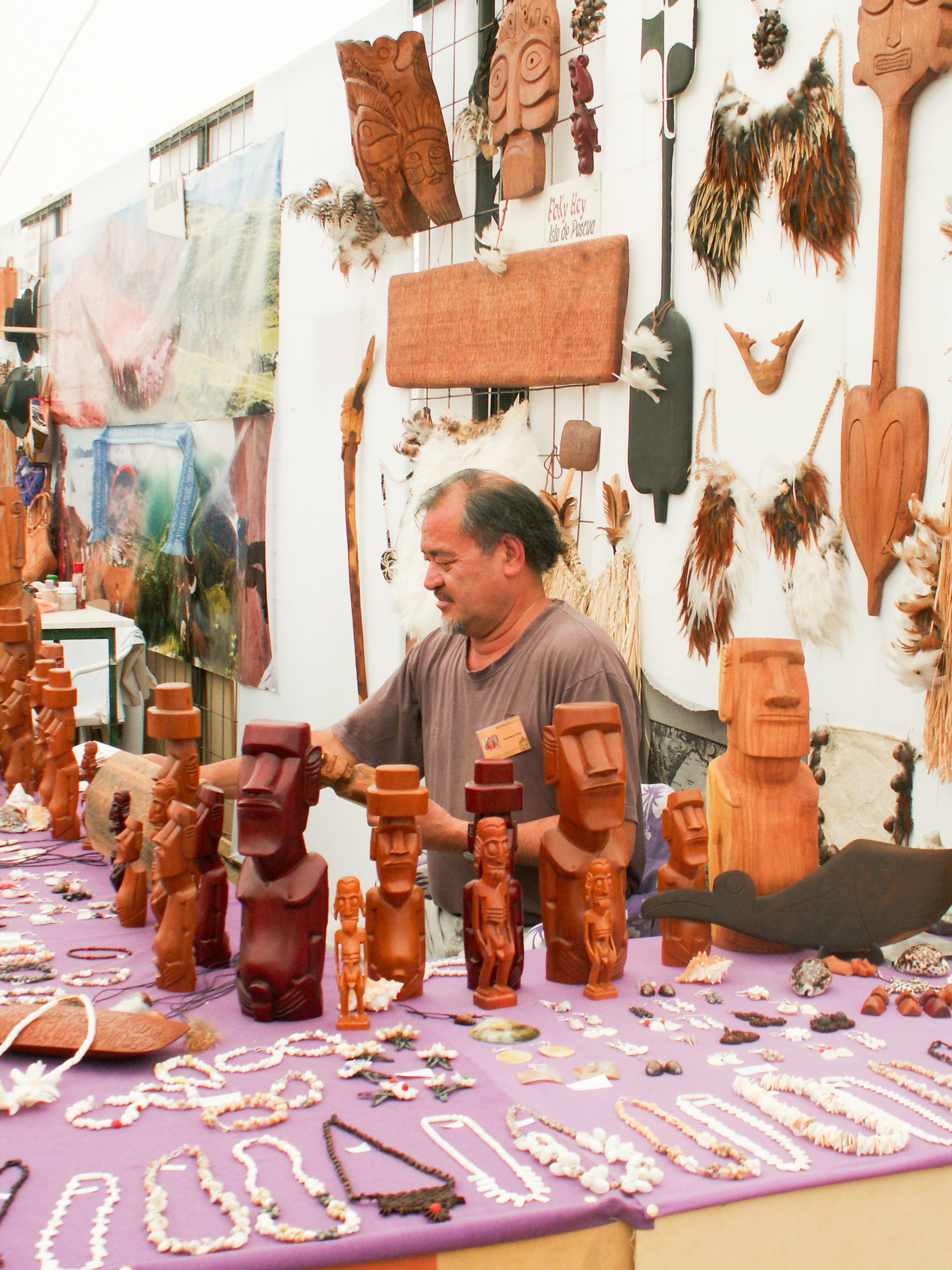

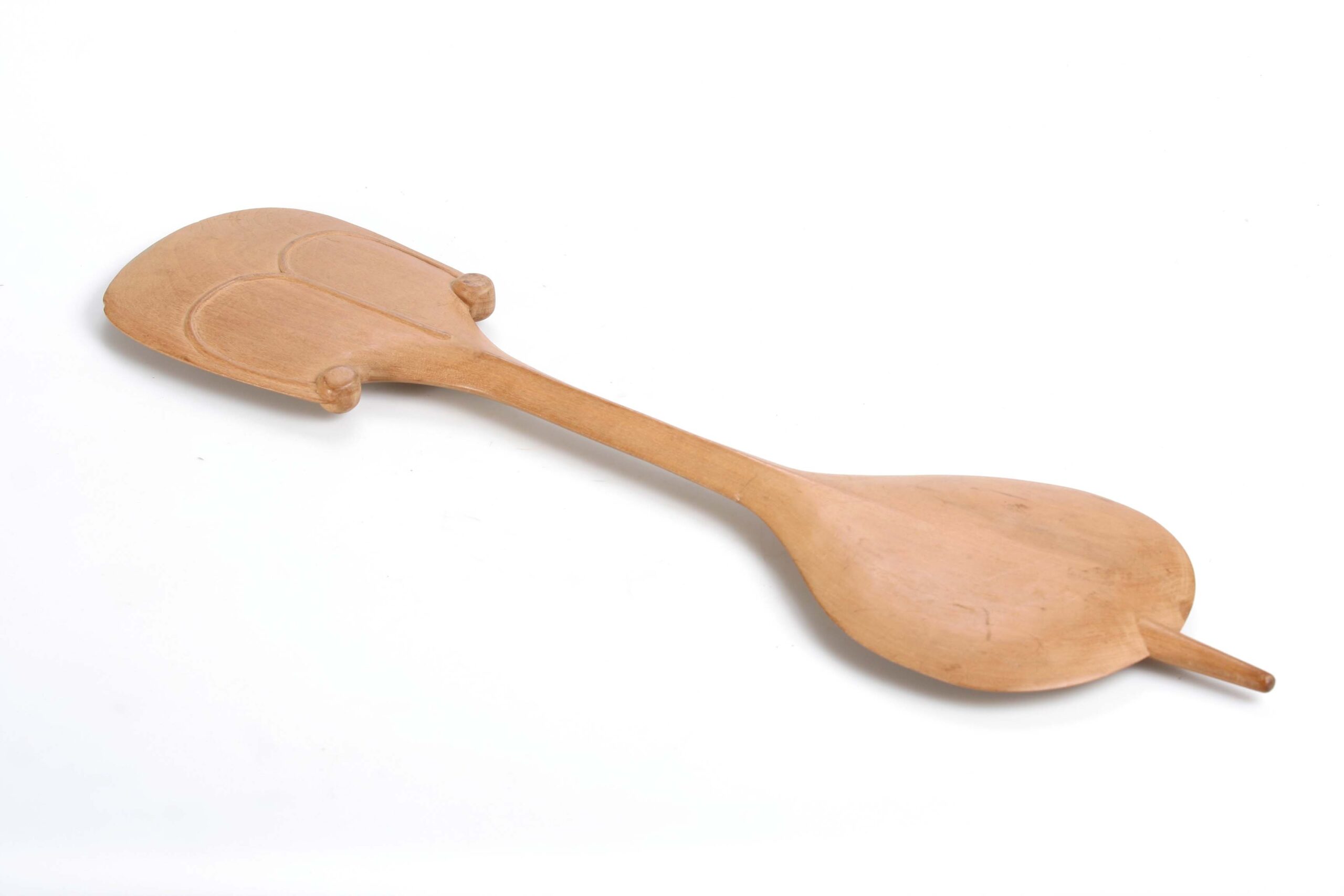
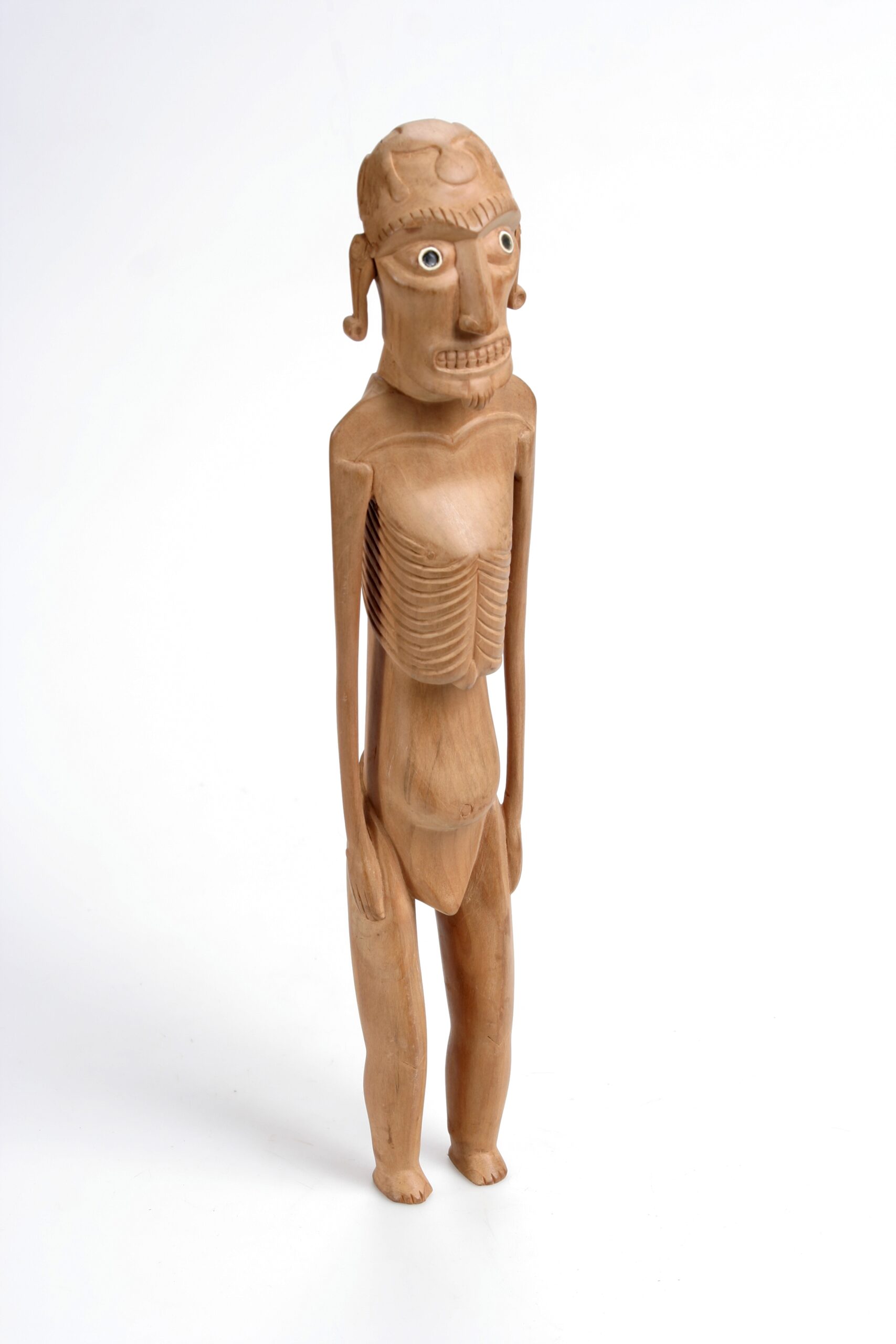
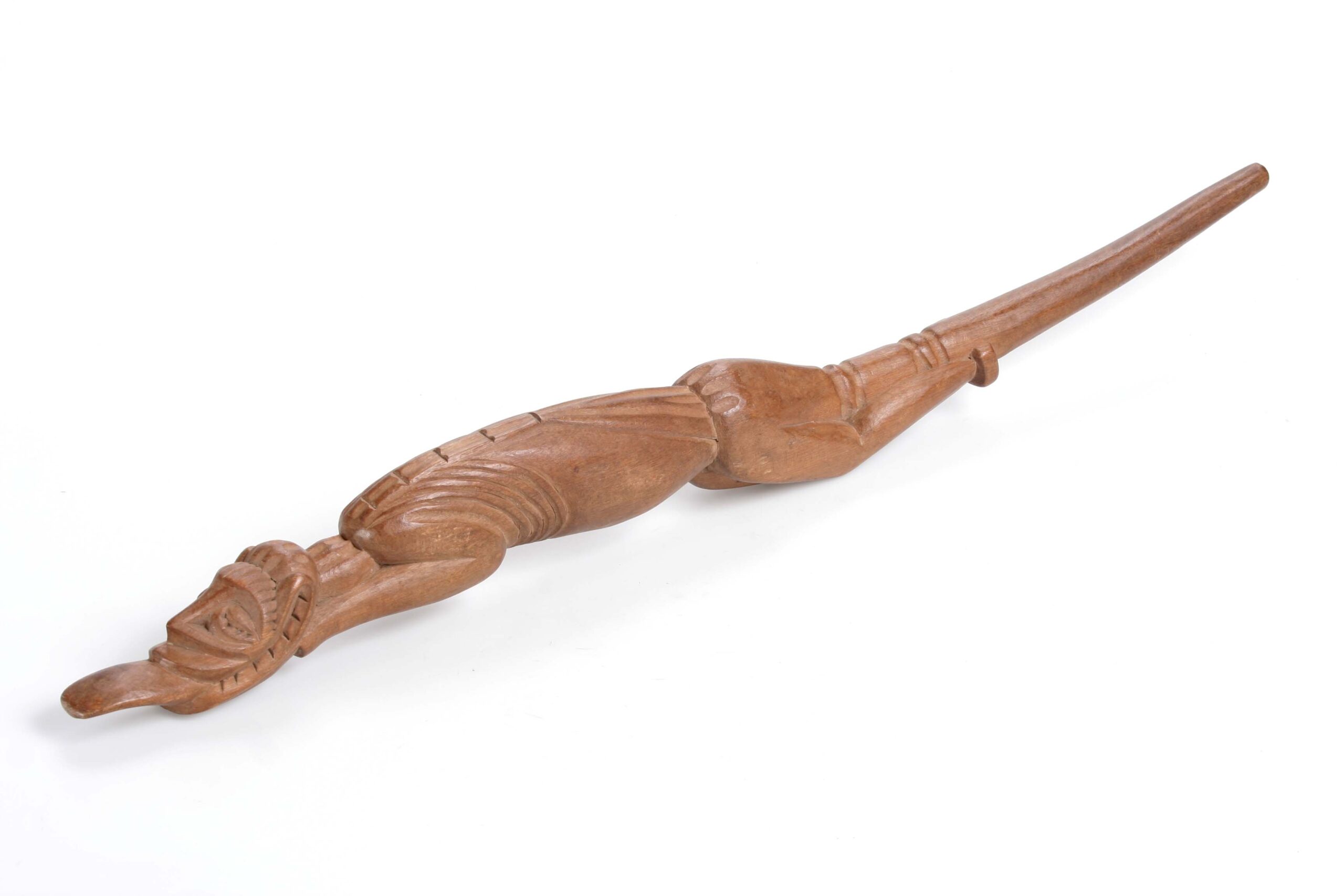
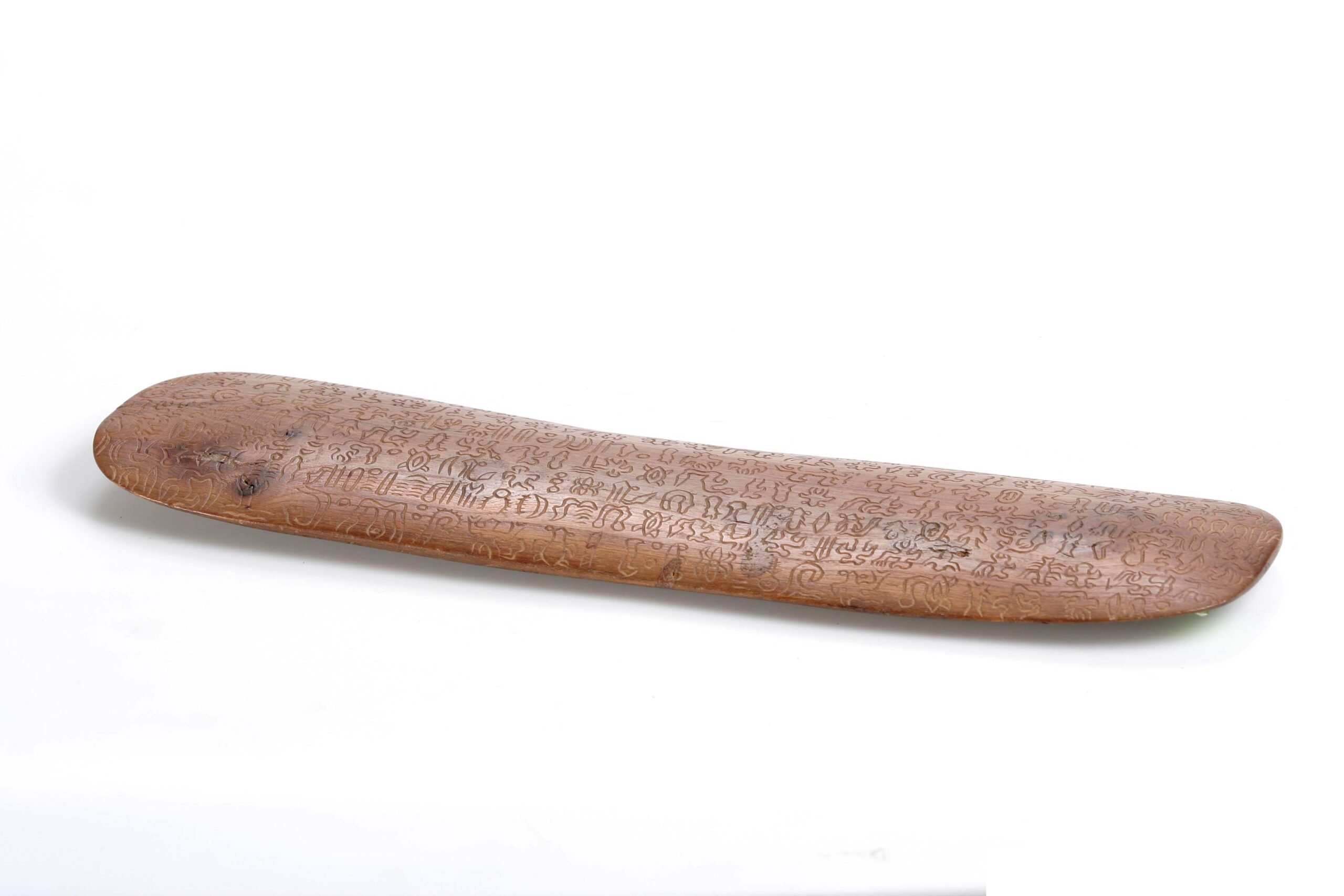
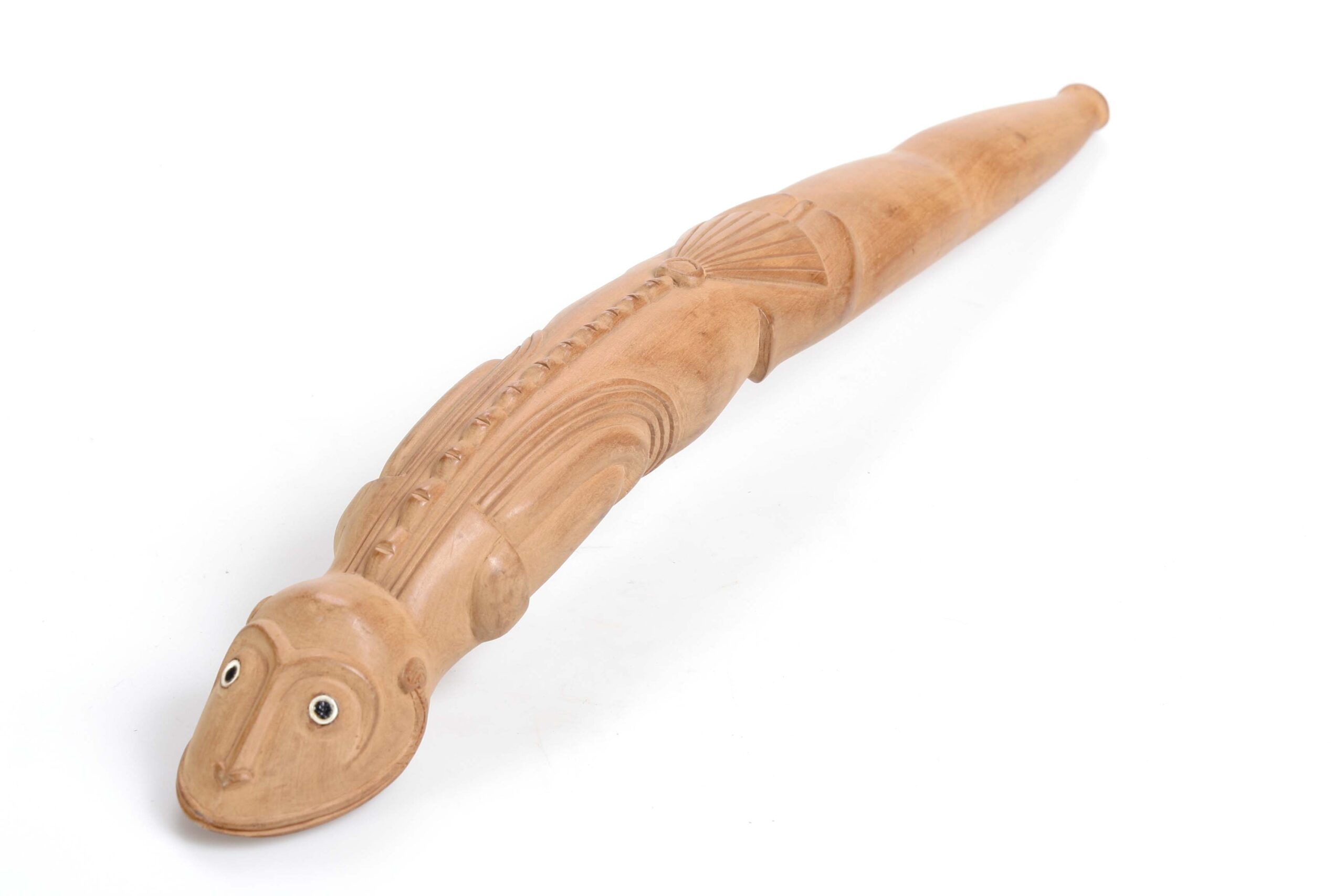

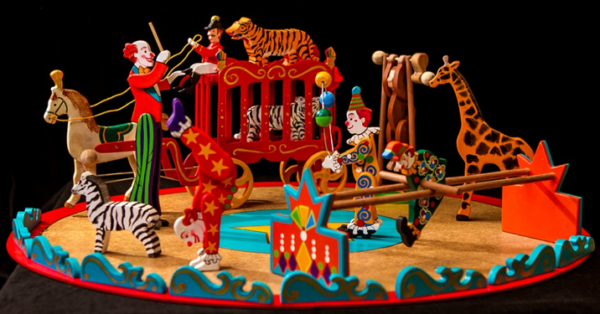
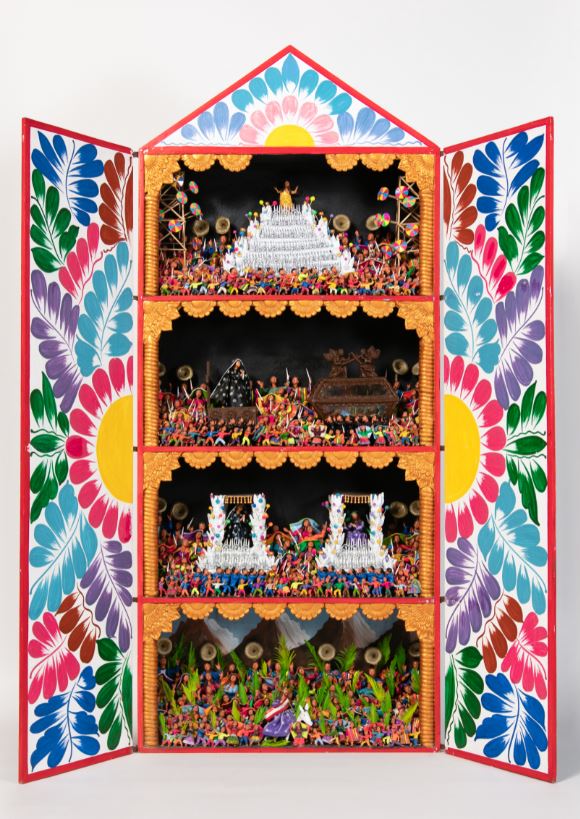
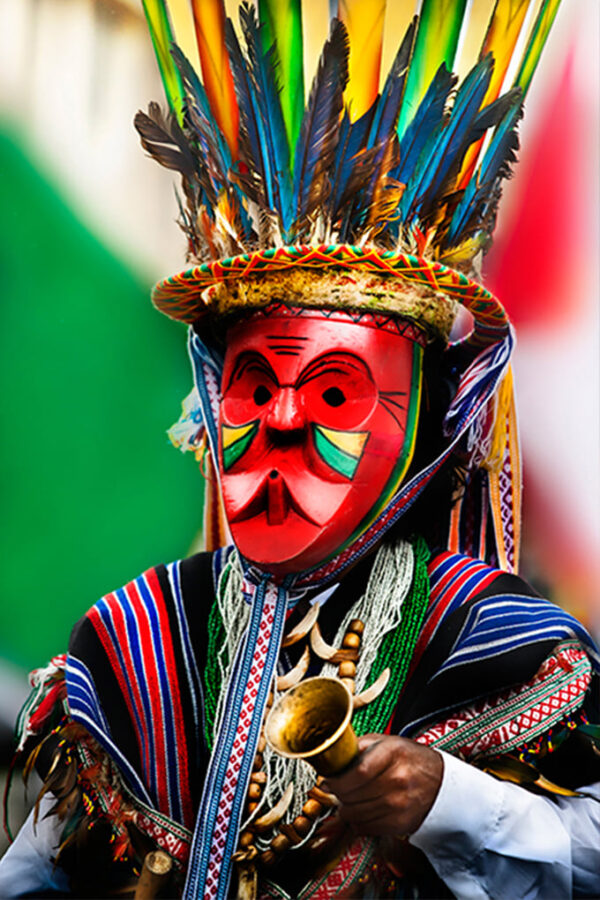
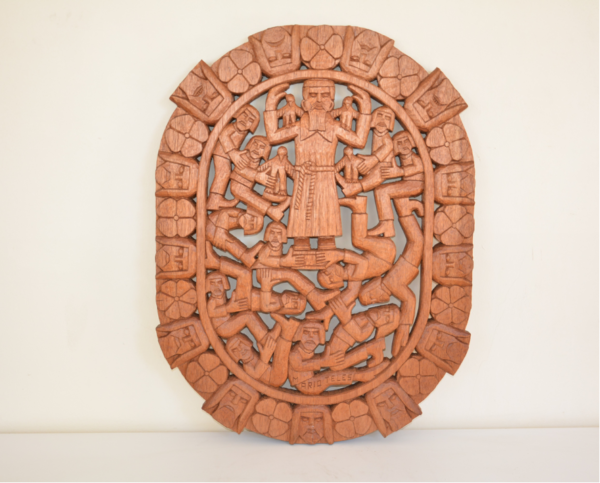
Reviews
There are no reviews yet.